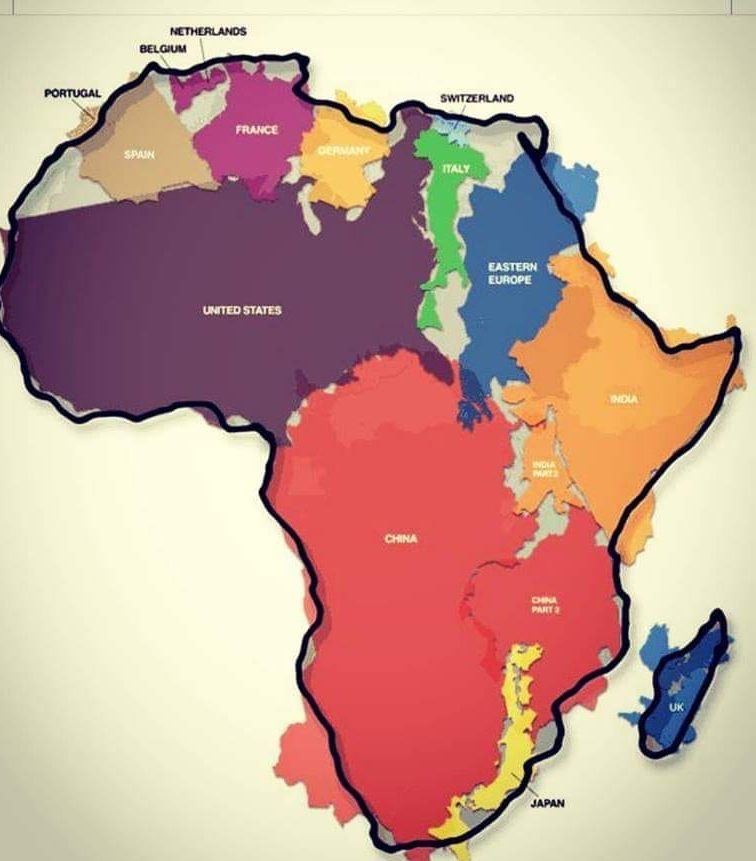Perspectives on Africa
What follows is no attempt at scholarship, but an effort to record my impressions of this vast continent. There is so much to learn. My trip to Tanzania was my first south of the Equator. The long flight from Amsterdam to Mount Kilimanjaro airport underscored for me Africa’s enormous size. Many countries could fit within its borders.
 Though Tanzania seems small in relation to the African continent, it is larger than my home state, Texas, and has more than twice as many people (25 million in Texas, 55 million in Tanzania). Texas’ Gross Domestic Product, however, was over 30 times that of Tanzania ($1.8 trillion in 2018 to Tanzania’s $57.4 billion. Tanzania ranks 81 among 196 countries measured by GDP. Tanzania’s northern landscapes reminded me of West Texas, especially Big Bend National Park. The Serengeti National Park, however, is in the tropics at a much higher elevation than Big Bend, and hosts many more species of animals. For someone like me, who grew up in the Panhandle of Texas, the winds in the Serengeti made me feel right at home.
Though Tanzania seems small in relation to the African continent, it is larger than my home state, Texas, and has more than twice as many people (25 million in Texas, 55 million in Tanzania). Texas’ Gross Domestic Product, however, was over 30 times that of Tanzania ($1.8 trillion in 2018 to Tanzania’s $57.4 billion. Tanzania ranks 81 among 196 countries measured by GDP. Tanzania’s northern landscapes reminded me of West Texas, especially Big Bend National Park. The Serengeti National Park, however, is in the tropics at a much higher elevation than Big Bend, and hosts many more species of animals. For someone like me, who grew up in the Panhandle of Texas, the winds in the Serengeti made me feel right at home.
Dr. Richard E. Leakey, the paleoanthropologist and son of Mary Leakey, who discovered “Lucy,” an early humanoid, wrote a compelling prologue to the book, Southeast Africa, 1880 to the Present by Daniel E. Harmon, which my roommate Kate had brought along. Leakey’s essay is entitled “The Dark Continent:”
Prior to about two million years ago, the only humans or proto-humans in existence were confined to Africa; as yet, the remaining world had not been exposed to this strange mammalian species. which in time came to dominate the entire planet. It is no trivial matter to recognize the cultural implications that arise from this entirely different perspective of Africa and its relationship to the rest of humanity.
How many of the world’s population grow up knowing that it was in fact African people who first moved and settled in southern Europe and Central Asia and migrated to the Far East? How many know that Africa’s principal contribution to the world is in fact humanity itself? These concepts are quite different from the notion that Africa was only “discovered” in the past few hundred years and will surely change the commonly held idea that somehow Africa is a “laggard,” late to come onto the world stage.
Another book I found very helpful is The Rift Valley and the Archaeological Evidence of the First Humans, by Kristina Lyn Heitkamp, published 2017 in the series, The First Humans and Early Civilizations. Here is a paragraph from her introduction to the book, which describes the “cradle of humankind” that I witnessed in Ngorongoro Cultural Area in Tanzania:
Although the Rift Valley has been compared to the Grand Canyon in Arizona, it formed differently. The Grand Canyon is a river valley that was shaped by erosion and the Colorado River about one million years ago. The Rift Valley is a massive land depression that was formed by plate tectonics, about 25 million years ago.
The Rift Valley sits on three major tectonic plates–the Arabian, Nubian, and Somalian plates. Tectonic plates form the skin of the earth, making up a layer called the lithosphere. Under the lithosphere flows a layer of semi-solid molten rock, called the asthenosphere. The molten rock shifts and moves the plates, either banging them together or pulling them apart. The Rift Valley’s three plates are moving away from each other, creating what is called a divergent boundary. As these plates move apart, they form rifts, cliffs, and volcanoes.
The formation of the Rift Valley completely changed Africa’s landscape. In less than five million years, East Africa went from flatland lush with rain forests to mountains, plateaus, and deep rift valleys with several lakes. Very few rift valleys around the world are active. Most are found underwater or have been filled in with sediments and are difficult to explore. The Rift Valley, however, is actively developing. Because it’s still moving and rifting, it’s a great place to study plate tectonics and a prime location for fossil preservation and recovery.
Update, May 24, 2025: Steve, Lilli, Violet and I will join Jay Collins’ family and friends for a safari in Kenya, June 19. Kenya is a country in East Africa with coastline on the Indian Ocean. It encompasses savannah, lakelands, the dramatic Great Rift Valley and mountain highlands. It’s also home to wildlife like lions, elephants and rhinos. From Nairobi, the capital, safaris visit the Maasai Mara Reserve, known for its annual wildebeest migrations, and Amboseli National Park, offering views of Tanzania’s 5,895m Mt. Kilimanjaro.
Kenya’s total area is approximately the size of the U.S. state of Texas. Specifically, Kenya covers 224,960 square miles, which is slightly smaller than Texas’s 268,596 square miles. Its population is 55.34 million. The largest ethnic group in Kenya is the Kikuyu people.
I will continue to this post as I learn. Please feel free to add you comments and suggestions below.
Leave a Reply